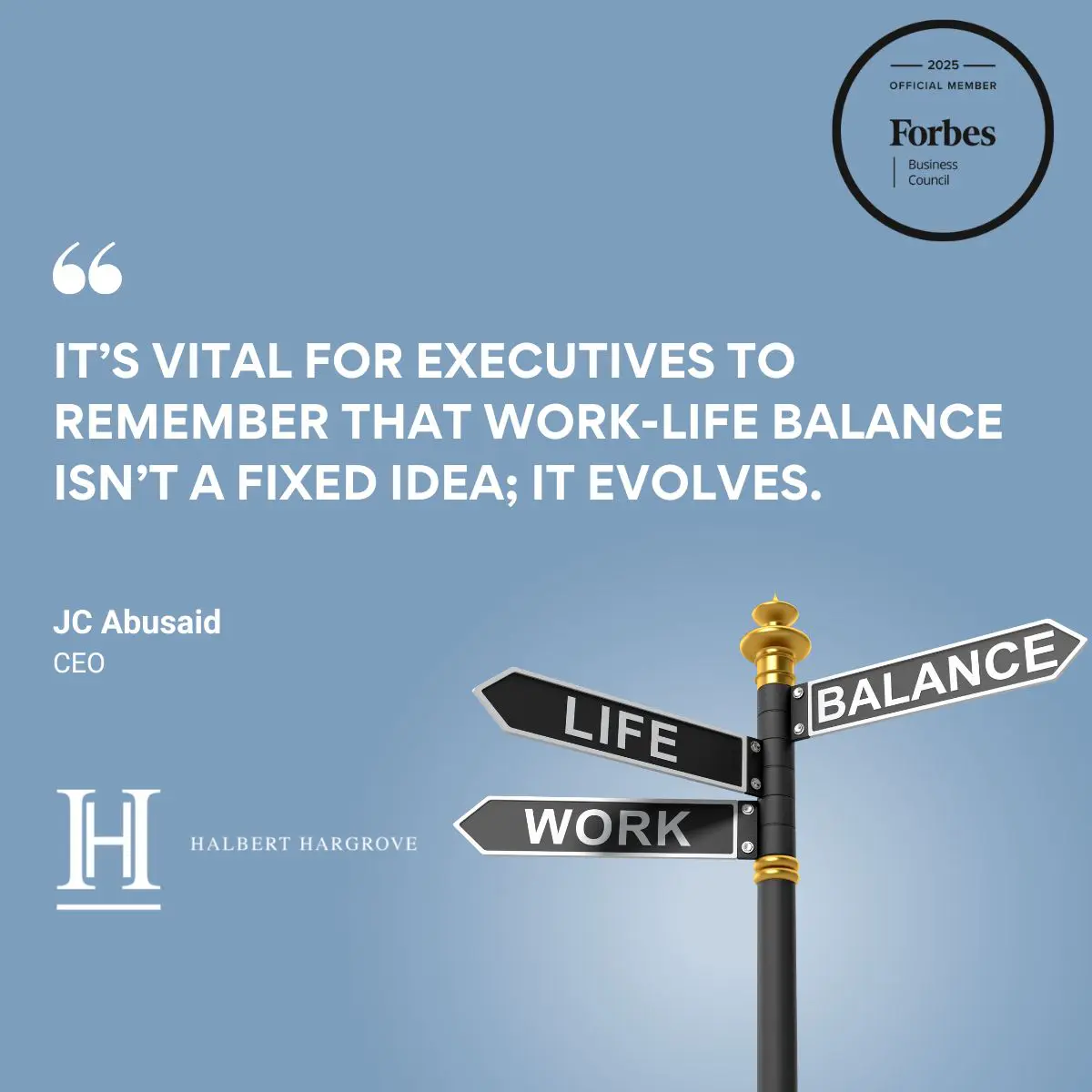By JC Abusaid, CEO/President as Featured in Forbes Business Council
As a leader, it’s important to understand what work-life balance really means. For me, flexibility isn’t just a perk—it’s a leadership strategy that sets the tone for the entire organization.
It’s vital for executives to remember that work-life balance isn’t a fixed idea; it evolves. CEOs need to recognize that employees’ life stages and circumstances shift: becoming a parent, going through a divorce, caring for aging parents. All of these impact how employees need to work, and companies need a culture of flexibility.
Impact Of COVID-19 On Work Culture
When COVID-19 hit in March 2020, the concept of working from home and what work-life balance truly means dramatically evolved. The pandemic accelerated what many of us already knew: people need adaptable work environments to thrive. It broke traditional work structures, making flexibility not only more critical but also more accessible than ever before. And employees are responding: “74% of fully remote workers said they are likely to seek employment at another company if they were required to return to the office full time…”
Prior to the pandemic, my company had already begun challenging workplace norms. We closed early on Fridays, offered hybrid options and valued trust over control. We’ve always believed that our team could deliver without micromanaging. COVID-19 exposed how rigid and outdated many work structures had become and accelerated the conversation of expanding work-life balance.
Nearly 60% of workers say the pandemic permanently changed how they view the role of work in their lives. A strong culture and a clear understanding of productivity levels are crucial for flexibility—without them, it falls apart. But if you run your firm well and hire the right people, a flexible workplace can enhance productivity.
Balancing Work And Personal Life
Early in my career, I missed many of my children’s school events. Eventually, it hit me: I was showing up for work, but missing out on what mattered most. That was a wake-up call. I realized that being present for those moments was more important, and I didn’t want to look back with regret.
One way I suggest companies accommodate employees with families is by scheduling meetings after school drop-offs (typically not before 8:30 AM) and try to avoid scheduling meetings after 3 PM. This is a strict policy, and it reflects an awareness that people have lives outside of work.
However, workplace flexibility looks different for everyone. It might mean adjusting hours to pick up your kids, running to the grocery store midday or hopping off early to make a gym class. If a company offers this flexibility, it’s vital to share clear guidelines with its employees.
At my firm, we don’t ask employees to request permission for every personal errand or life event—they simply block it on their calendar and communicate when needed. It’s a system based on trust and accountability, not control. When people feel trusted and supported, they show up more engaged.
In addition to flexible hours, we mandate one day off each month called the “Skeleton Day,” have an unlimited vacation policy (which we call “responsible vacation”) and offer paid sabbaticals and study time. While unlimited vacation can sound like a gimmick, we mean it and actively encourage people to use it. It’s a self-regulating system. If someone takes too much, teammates speak up. We monitor it informally, and if it becomes an issue, we address it.
This balance also requires boundaries. We do not send employees emails after hours or on the weekends. Leaders have to practice what they preach—you can’t say you care about balance and then signal otherwise.


